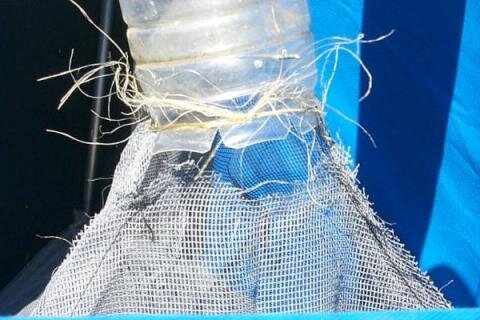What are the problems with traps?

Assembly: First, the trap has to be assembled correctly, quite small errors can greatly reduce the efficiency of a trap. For instance, a small gap between the top cage and the netting cone of an Epsilon trap will allow flies to escape.
Maintenance: Second, traps will get damaged with use. The cloth gets ripped and the colour of the cloth fades in the sunlight. Repairing minor damage can help keep a trap effective. Periodic rather than continuous use will reduce exposure to the sun and so extend the effective lifespan of the trap.
Frequent visits: Traps may also be blown over or stolen. They should ideally be visited daily, or every 2-3 days at the least. Each visit the trap cage can be emptied and flies counted, supports adjusted, any minor damage repaired, and a frequent presence will deter theft.
Resist the temptation of erecting a trap and then visiting it a month later, thinking that you will have a month's worth of flies. It will almost be certainly be missing or damaged when you return and you won't know whether the absence of any flies was because there is none in the area or that they all escaped.
Relative cost: Traps use more materials than targets and consequently they are more expensive. Therefore to control tsetse, we recommend the use of targets rather than traps. If you want to carry out surveys however, you will have to use a trap. For more information on using targets to control tsetse see Controlling tsetse with targets.